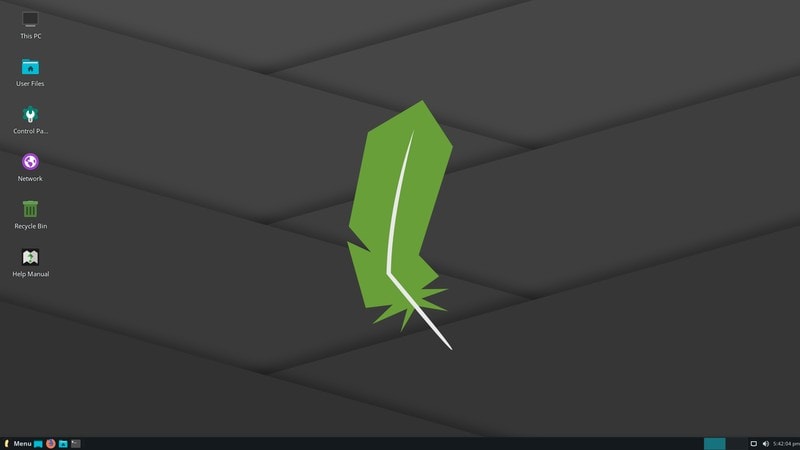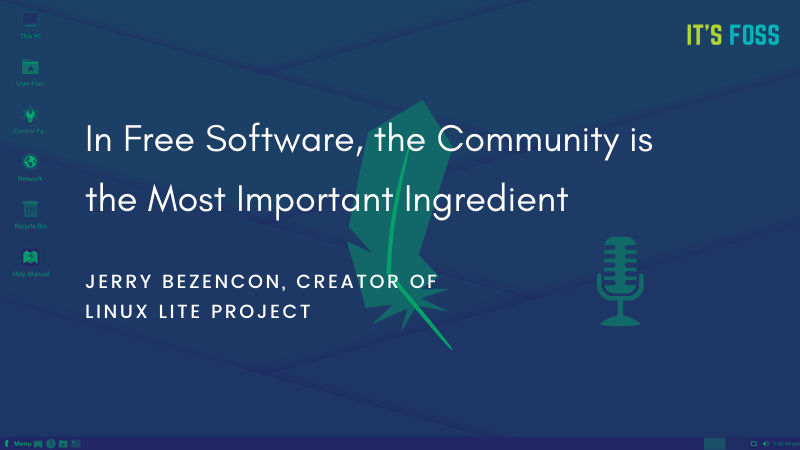You are probably aware of Linux Lite. It is a lightweight Linux distribution based on Ubuntu. If you have an older system with 1 GB of RAM, Linux Lite becomes an excellent choice for you.
We have covered Linux Lite releases several times on It’s FOSS and if you are a regular reader, you would have come across it.

We talked to Jerry Bezencon, the creator of Linux Lite project, to know some background details on this project.
Interview with Jerry Bezencon of Linux Lite
Jerry is based in Auckland, New Zealand, and he devotes a good deal of time and effort on Linux Lite project. Jerry shares his vision of the project in this interview.
Tell us about the origins of Linux Lite. When did you create it first and what made you create it in the first place?
Linux Lite was started in 2012 for 3 important reasons. One, I wanted to dispel myths that a Linux based operating system was hard to use. Two, at that time, there was a shortage of simple, intuitive desktop experiences on Linux that offered long-term support. Three, I had used Linux for over 10 years before starting Linux Lite.
I felt I needed to give back to a community that had given so much to me. A community that taught me that by sharing code and knowledge, one could have a dramatically positive impact over peoples computing experiences.
How is Linux Lite different from so many other Ubuntu-based distributions?
Our approach to problem solving and our support. The first sits within the system itself. Lite Tweaks is a good example of this. We try to think of all the things that could possibly go wrong with a computer system, then write applications that fix those problems as easily as possible, should they occur. There is a lot of foresight in the team.
The second is our approach to support. This mainly comes in 2 forms. Our massive built-in and online Help Manual and our large forum community full of some of the nicest people I’ve ever dealt with in the free software and open source community.
How do you and your team work on developing Linux Lite?
There are 24 hours in a day. With 6 – 8 hours for sleep and another 6 – 8 hours for my other job, that’s more than enough time to put towards any project, hobby or job, or all 3.
I take a more professional approach to code writing. I’ll come up with an idea, mock-up the UI then write the base code, or the whole application myself. If I need help, I prefer to hire and pay via our generous donators, freelancers.
That way I can set a budget, the user gets a solid, well-written application by a qualified professional who is fluent in that language, and get I exactly what I ask for on time and without the usual flame wars and egos that can exist in some teams.
By using professional, paid programmers, I avoid all the negativity completely. Application writing has become an extremely peaceful and rewarding exercise.
What are you most proud of about this project?

I’m most proud of the community that has stayed loyal to us throughout the years. In a business, your staff are your most valuable asset, in free software, the community is the most important ingredient.
What are your future plans with Linux Lite?
To always strive to look for ways to make a person’s computing experience simpler, faster and trouble free. Our target audience shouldn’t have to dive into the terminal to try and fix things. To continue to build a feature-complete operating system that is light on resources.
What new features can we expect in Linux Lite in upcoming versions?
Due to tradition, we like to keep those as surprises. I never run out of ideas. Some nights I get no sleep because my mind is buzzing with ideas for our next application, or how to solve an ongoing, difficult bug.
Are there any features that you really want to implement but haven’t been able to do so far?
You can always do more to enhance an operating system. I’m currently working on our most ambitious application to date. One that doesn’t need a GUI and that sits within the system, anticipates problems and solves them before they are seen by the user. It will have a Reports feature so that those who like to know what is going on, can see for themselves what the code is doing. It will, of course, be free software. My first foray into A.I. that I hope other Linux systems can benefit from in the future.
Have you achieved the goal for which you started the project?
Goal setting is ongoing. There’s no such thing as the perfect operating system. But there is no harm in aiming for that.
How can the users and readers help the project?
In the usual ways. Documentation, coding, volunteering on the Forums, buying merchandise, writing blogs, donating, making videos, starting websites like yours – the list goes on.
We hope you like reading about the background of open source projects. You may read more interviews with various project leaders.

